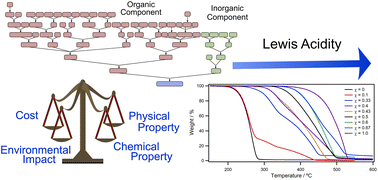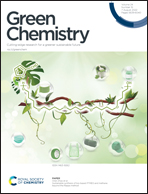Halometallate ionic liquids: thermal properties, decomposition pathways, and life cycle considerations†
Abstract
Halometallate ionic liquids provide new opportunities for industrial catalytic processes because of their unique blend of physical and chemical properties. Tunability underpins the success of ionic liquids because small structural changes can have drastic effects on either property. Catalysis can be optimised by adjusting structures to target properties such as Lewis basicity and acidity, but the structural changes have simultaneous impacts on physical properties. In this work, we provide a thorough, methodical, and reliable list of thermal parameters to help define temperature limits to prevent catalyst poisoning and limit the need to replace costly and environmentally demanding solvents. Mechanistic insights show that decomposition is particularly detrimental for halometallate ionic liquids, and life cycle analysis highlights that lower levels of organic cations are better for economic and environmental sustainability.

- This article is part of the themed collection: 2022 Green Chemistry Hot Articles


 Please wait while we load your content...
Please wait while we load your content...